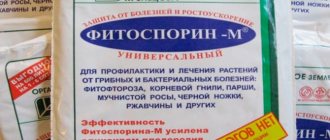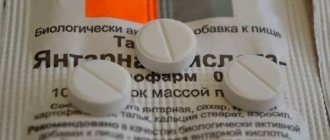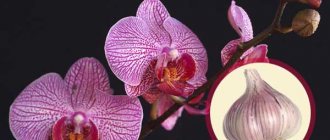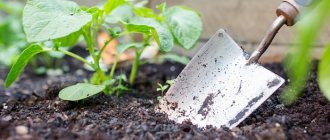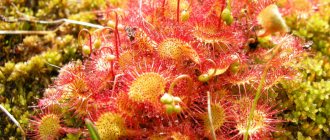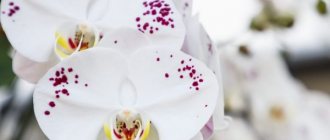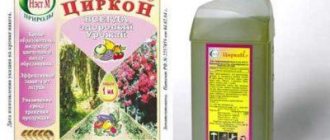It happens that your favorite orchids get sick, and it can be difficult to accurately diagnose the disease due to ignorance. Then the grower begins to panic and is at a loss as to how to treat this infection and what to do with the plant.
The best way out of the situation would be to resort to treatment with a powerful complex action agent - Fitosporin-M (hereinafter, for brevity, simply Fitosporin).
Read in this article how to properly use it on indoor orchids, as well as the secrets of saving plants with the help of the drug.
What it is?
Fitosporin is the latest drug of biological origin. Every gardener should know how to use it. After all, it was created to combat plant ailments, the source of which are fungi and bacteria. These pests most often attack:
- house plants;
- shrubs;
- fruit and vegetable crops.
This drug is used not only to combat parasites, but also to root cuttings. They are processed immediately before planting.
Reference. Fitosporin is distinguished by its speed of action. The effect becomes noticeable immediately after the first use.
Fitosporin is the key to orchid health
Perhaps novice gardeners have heard that orchid roots are treated with phytosporin from time to time, but they did not understand the purpose for which this is done. In order to understand the issue, you should consistently understand why the drug is needed at all.
Fitosporin is a microbiological agent, in other words, a herbal medicine that has a protective effect on decorative flowers from the effects of “fungi” and bacteria.
Infographics of the use of phytosporin for orchids
The presented drug consists of spores and living fractions of Bacillus subtilis culture cells 26 D. The product begins to work immediately after application.
As a carrier of the active compound, a composition is used that is prepared on the basis of chalk, other fillers, as well as OD-humate. The latter enhances the fungicidal effect of phytosporin, ensuring the stability of the resulting effect for a long time. That is why the drug can be stored for two years. The product is low-hazard, so you don’t have to worry that something wrong will happen to the orchids after treatment.
Phytosporin can be found on sale in the following forms:
- powder;
- pasta;
- liquids, volume 110 ml.
True, this does not mean that the drug can be immediately “poured” onto flowers. He will definitely get a divorce. Information about use can be found in the instructions.
It must be said that when we say “phytosporin,” we do not necessarily mean this particular drug. Many people mean products in which the main active ingredient is fractions of bacterial cultures. Although there are drugs with other cell strains, these include Alirin or Gamair.
This is interesting: Soil for orchids - selection of the required soil composition
What is it used for?
Phytosporin quickly spreads through the vascular system of plants. The basis of the drug is spores that release waste products. These products inhibit the development of fungal and bacterial diseases, and then completely destroy them. The product perfectly fights the following pests:
- powdery mildew;
- root rot;
- fusarium;
- bacteriosis
Fitosporin is an indispensable assistant for lovers of the Orchid genus, but the effect depends on many factors. Often the effectiveness ranges from 65% to 95%.
The drug described is one of the low-toxic ones, so the treatment can be carried out in residential premises - this does not threaten severe poisoning.
Indications for use
The use of “Fitosporin” for an orchid is advisable when the following is detected in a flower:
- bacteriosis;
- late blight;
- septoria;
- rotten roots;
- fusarium;
- brown rust;
- powdery mildew.
The result is influenced by many factors, including the degree to which the plants are affected by the disease. Typically efficiency ranges from 65 to 95%. The drug is mildly toxic, so flowers can also be treated with it indoors.
Attention!
"Fitosporin" is useless for viral infections.
Release form
The drug is available in several forms.
- In the form of a liquid or aqueous suspension. Live cells and spores are contained in an amount of at least one billion per milliliter of the drug.
- In powder form. The products are sold in sachets weighing 10 and 30 grams. One teaspoon contains 3-3.5 grams of powdered preparation.
- Paste. Its weight is 200 grams. In turn, in one gram there are more than 100 million living cellular organisms.
Compound
Fitosporin is a fungicide of biological origin. This explains its composition, which contains nothing but living cells and spores of fungal bacteria.
These components allow the drug to survive the following unfavorable factors:
frost;- heat;
- drought;
- increased air humidity.
Under such conditions, the entire drug is converted into spores. There is another type of Fitosporin on sale, to which additional useful elements have been added.
Typically these additives are:
- potassium;
- phosphorus;
- nitrogen;
- chalk.
Important! The fact that Fitosporin is a biological drug does not mean that it should be used frequently without a specific need.
Frostbite
Phalaenopsis is one of the plants that must be kept warm; they can tolerate a drop in environmental temperature to +16°C, however, prolonged exposure to these low temperatures can lead to the death of the plant.
Phalaenopsis hypothermia can be stated if you notice the following signs: wet, slippery spots are noticeable on the leaves, the appearance of which leads to further death of the leaf plate.
If you are sure that the phalaenopsis is frozen, what should you do? If such spots affect the entire plant, then it cannot be revived, but if individual parts of the leaf are damaged, you should try to help the flower:
- Part of the damaged sheet is cut off, the cut area is treated with charcoal powder or an alcohol-free antiseptic;
- If a whole leaf is damaged, then it must be removed completely, dividing it in half vertically and pulling both ends of the leaf, carefully without damaging the stem, then the stem is powdered with crushed charcoal or cinnamon.
In what cases is it used?
Flower growers use herbal remedies to solve the following problems with plants:
- the beginning of withering;
- development of fungal and bacterial diseases;
- manifestation of root rot;
- the appearance of a black leg;
- the beginning of the development of late blight.
Gardeners also often use this drug to treat planting material. Phytosporin is especially necessary for orchids during their flowering and reproduction (how and what else can you feed a flower during flowering?).
In the case where the orchid was practically destroyed by pests, the herbal remedy will not have a restorative effect. In this case, stronger drugs with a more chemically active composition will be required.
Methods of using the drug
The product is used at various stages of flower development. They can cultivate the soil and shed it. By soaking orchid seeds in the Fitosporin solution, it becomes possible to prevent infection, which is not always possible to protect against. It can penetrate through work utensils.
Fitosporin solution is used to soak orchid roots. This is done for preventive purposes during transplantation or during complete or partial revival of the plant. During the procedure, living roots are washed, and old ones are cut off with a disinfected instrument, after which the plant must be kept in a Fitosporin solution. Be sure to sprinkle the cut areas with cinnamon or crushed charcoal and then dry them.
For treatment, spraying the leaf mass from a fine spray bottle is effective. To do this, it is best to use the liquid form of the drug. Spilling can be done if the plant is in heavy soil.
Safety precautions
Fitosporin has been assigned the fourth class of danger for humans and the third for bees. If the safety precautions specified in the instructions are not followed, there is a risk of irritation of the mucous membrane. It is worth noting that this product does not have phytotoxicity.
Rubber gloves should be worn when working with this drug. It would also be a good idea to wear a protective apron. Smoking, eating and drinking are prohibited during work.
If Fitosporin gets on the skin or mucous membranes, you should immediately rinse the affected area under running water. In case of accidental ingestion, drink a large amount of purified water (at least 3-4 glasses), take activated charcoal and induce vomiting.
Alternative
Fitosporin-M has gained popularity due to its low price and effectiveness in the fight against fungi. If the product is not on sale, you can replace it with Trichodermin (FITO-M). The fungicide is based on strains of Bacillus subtilis, which fights blackleg and powdery mildew. The medicine is produced in the form of a liquid concentrate in bulk containers. The drug is not as convenient for treating orchids as the well-known biopesticide.
Gamair is a powerful remedy that is used to protect plants from diseases and modulate immunity. Produced in the form of tablets for preparing a solution for irrigation and spraying. To protect orchids from fungi, once a month is enough. You can use similar products between waterings.
If the degree of plant damage is severe, then Fitosporin will not help. To destroy the fungus without consequences, you need to act quickly. A chemical fungicide (Fundazol, Maxim) will save you from infectious wilt and kill pathogens. The product is used for soaking roots and treating tissues.
Fitosporin-M is a biofungicide that is safe for humans and effective against fungal diseases. Understanding how much powder to take and when to use the drug, it is easy to stop the destruction. If you do everything according to the instructions, the medicine will not harm the orchids during flowering.
Step-by-step instruction
Processable:
- seeds;
- cuttings;
- soil before sowing or planting.
Reference. The prepared solution is sprayed on fruit-bearing plants and orchids during the growing season.
Dosage
The required amount of the drug depends on the following factors:
- processing method;
- type of plant being processed;
- purposes of use.
- To spray phalaenopsis, you need to take ten drops of Fitosporin and add them to a mixture of Fitosporin paste and water (mixture proportions - 1:1).
- To water the orchid, you need to prepare a different solution. To do this, dissolve 15 drops of herbal medicine in 1 liter of clean water.
To soak plant cuttings, you need to stir 4 drops of paste in 0.2 liters of water.- There is a bottled preparation. To prevent diseases, use 4 drops per 0.2 liters of water. And for the treatment of detected ailments, 10 drops per the same amount of water.
Experienced gardeners strongly do not recommend using Fitosporin “by eye”. Before using it, you need to carefully study the information on how to properly dilute the paste and other types of preparation for processing and how long to keep orchid cuttings in the solution.
How to dilute the powder?
This process may vary. It all depends on the goal pursued by the grower.
On a note. The prepared solution can be used two hours after preparation.
- Sowing of planting material. The most suitable dosage is 1.5 grams per 0.1 liter of water. The seeds are left in the solution for 2 hours.
- Prevention of root rot during replanting. Dissolve 10 grams in 5 liters of water. Soak the root system in the resulting solution for 120 minutes.
- Prevention of other fungal and bacterial diseases. 1.5 grams of Fitosporin are dissolved in 2 liters of water. The orchid is sprayed with the prepared product.
- Treatment. 1.5 grams of the drug are poured into 1 liter of water. Then water the plant with diluted water.
How to treat a plant?
- If pests are detected, dilute 1.5 grams of the product in one liter of water. And then they water the orchid with it. But not in a simple way, but by immersion.
- Place the infected plant in Fitosporin for 30 minutes.
- After the specified time has passed, the plant is taken out of the solution, the water is allowed to drain, and the pot with the flower is returned to its permanent place of “residence.”
- During processing, the pot loses its transparency, but after several showers or wiping it will return to its former appearance.
- The treatment process should be repeated at least 10-15 days later. The exact time is determined after the soil has completely dried. The procedure is completed after making sure that the pests have died and nothing else threatens the orchid.
- It is not recommended to immerse a flowerpot with phalaenopsis in Fitosporin for more than half an hour.
- You can spray a little more often - about once a week.
Reviews from flower growers
Mikhail, Kazan. In my opinion, the best remedy for combating diseases of indoor plants . I grow orchids, mainly phalaenopsis and cymbidiums, and even with the best care they can periodically have problems with the roots. Filled it up, didn't check it properly and you already have a problem. Periodic preventive treatment with phytosporin with watering or spraying allows you to completely forget about any diseases. It will cure any bacteria or fungus, of course, if action is taken immediately.
Irina, Perm. The main drug in the plant medicine cabinet. Orchids respond well to treatment; they are alive, healthy, and do not get sick. I tried all types of phytosporin, it is most convenient to use in liquid form - less hassle and fuss with proportions, etc. In addition, there is no dust left on the leaves, roots and substrate. It’s easy to use, you don’t need to be smart, it’s effective and economical. What else do you need? It is very convenient to “etch” the roots of orchids without removing the plant from the pot.
It works literally within a few days. In general, I don’t know what could replace it if the drug suddenly disappears from the shelves. I buy it at bazaars where they sell seeds, chemicals, and all sorts of gardening utensils.
Possible errors and their elimination
The instructions indicate that the drug described cannot harm the plant. Even with a significant excess of the dose or concentration, no serious negative consequences are observed. However, it is worth noting that Fitosporin, which contains various useful elements, is not used to treat infected orchids. Such products are more suitable for preventing pest attacks, as well as maintaining the health of phalaenopsis.
Important! You should not carry out the next treatment if the soil has not yet completely dried out after the previous treatment.
Storage conditions
The shelf life of the drug is 4 years. It must be placed in a cool, dry place so that children do not have access to the product. And also make sure that Fitosporin does not come into contact with food products.
Alternative
A product similar in composition and functions, which can become a replacement for Fitosporin, is Trichodermin. It is most often used for:
- pest control (rot, late blight, fusarium, powdery mildew);
- stimulating growth;
- improving the body's protective functions.
However, Trichodermin does not contain live bacteria, so this drug cannot be considered a complete analogue of Fitosporin.
The secret to saving seeds
Sterility is one of the main conditions for the propagation of orchids in artificial conditions. Flower growers carefully disinfect all utensils, eliminating the possibility of contamination of planting material with microorganisms.
Soaking in a solution of Fitosporin has a beneficial effect:
- on disease resistance;
- seed germination rate;
- growth and development of orchids.
How to soak?
To soak planting material, follow simple instructions:
- Fitosporin is diluted in the dosage recommended for soaking seeds;
- immerse the seeds in a container with a solution;
- They are taken out after 2 hours and sent for germination.
Can it be treated with dry compound?
Yes, you can treat it with a dry compound, but it will be an absolutely useless procedure. Bacillus hay shows its activity only after soaking, and dry spores will simply lie and wait for favorable conditions to arise.
Useful video
From the video you will learn how to use Fitosporin for orchids. Properties, dosage, solution preparation:
Unlike other flowers, orchids require special care, processing and feeding. Therefore, it is very important to know which means are suitable for this. Read about such drugs as Fitoverm, Aktara, Epin, Bona Forte, succinic acid, Zircon, Cytokinin paste, Agricola and B vitamins.
Compatibility with other drugs
You can use “Fitosporin” for orchids with other drugs:
- antibiotics;
- growth stimulants;
- fungicides;
- insecticides;
- various fertilizers.
They are often used in combination to enhance the effect. O has good compatibility with Triallat, Fundazol and Fundazol.
Important!
It cannot be combined with drugs that have an alkaline reaction. This environment is detrimental to beneficial microorganisms. It is undesirable to use Fitosporin with Gumi and flower plant growth stimulants at the same time.

